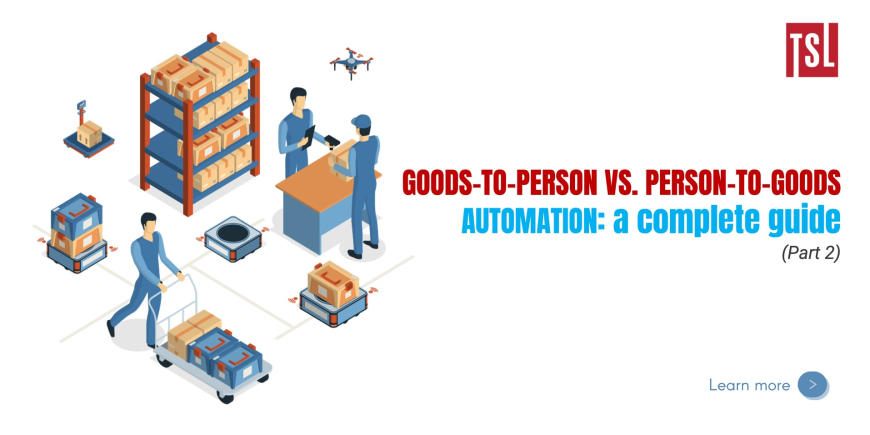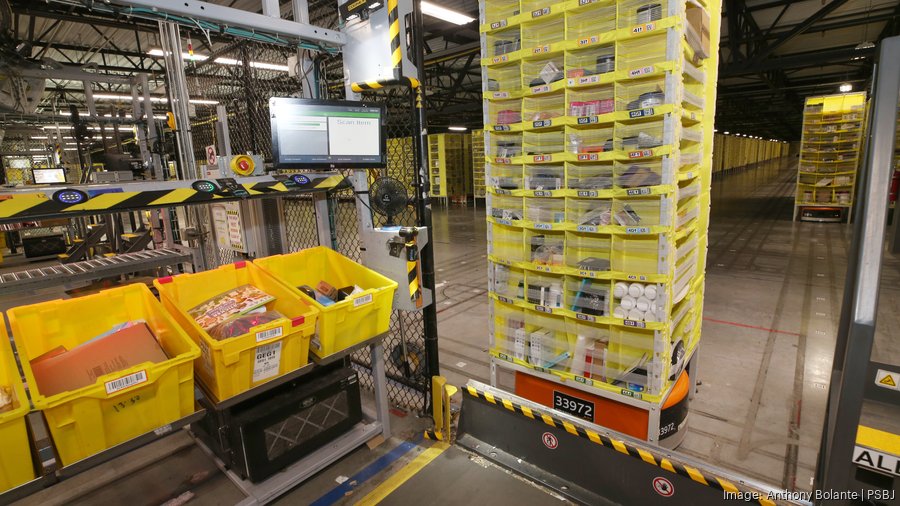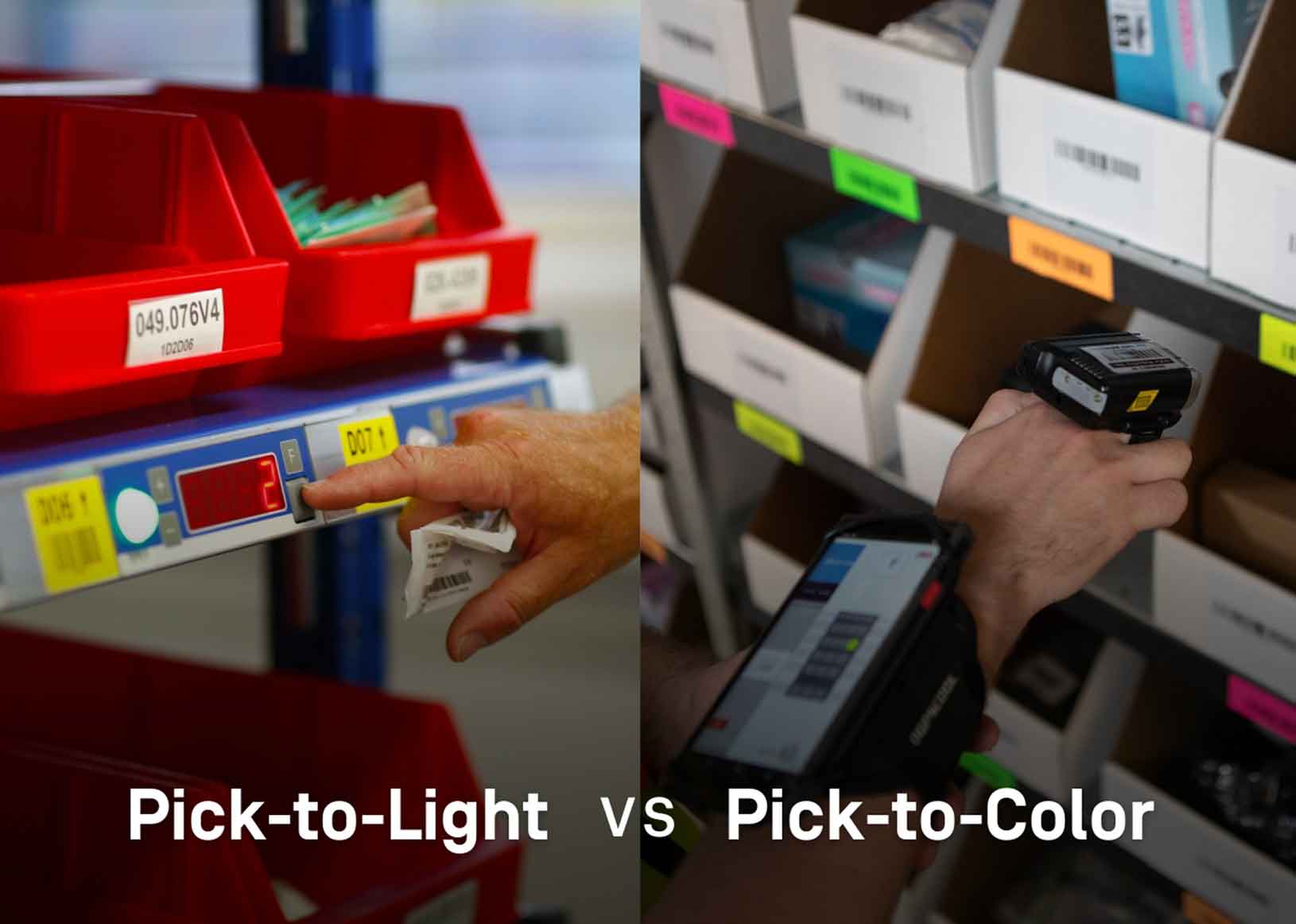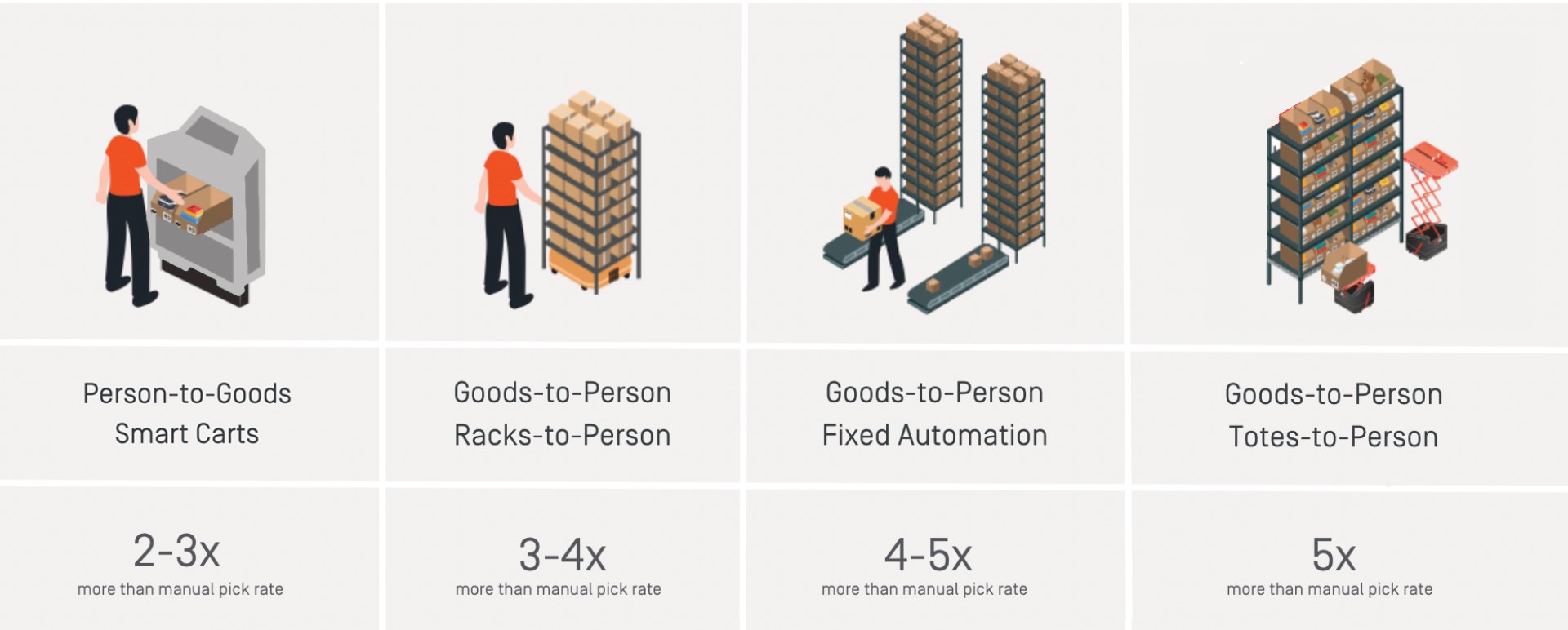Goods-to-Person vs. Person-to-Goods Automation: A Complete Guide (Part 2)
In the previous post, we provided information on the Goods-to-person (G2P) automation method. In this part, we will go into detail about Person-to-Goods (P2G) automation method and the key differences between the two methods.
Person-to-Goods (PTG) Automation
Today, many Autonomous Mobile Robots (AMR) solutions on the market are based on Person-to-Goods fulfillment and operate as smart carts powered by software. The order picker meets the robot at the pick site, removes items from the shelf, puts them into the smart cart, then each proceeds separately to another pick location. People walk less because they tend to concentrate on a warehouse zone, say an aisle or two, which means less foot travel. The smart carts handle most of the travel including the longer return route to the packing station when all items in the order have been picked.
While there is a certain amount of inefficiency with all warehouse walking, WMS software and AI can help cut down on walk time and improve picking productivity. Associates picking orders can be notified of the next pick location with wearable technology such as wrist displays or smart glasses. Technologies such as Pick-to-light or Pick-to-Color guide workers to the exact location of the SKU, while AI software can significantly cut travel time.
TSL is the official partner of Blue Yonder – a top leader in the industry for warehouse management systems and other logistics solutions. Furthermore, TSL also distributes barcode devices with top-tier, advanced technology from Honeywell and Zebra.
Key Differences Between PTG vs GTP Automation
- Increase in Productivity
Both automation solutions help increase productivity. As person-to-goods automation still involves people going out into the aisles to select items, productivity increases over manual picking can reach 2-3x.
Goods-to-person automation uses a variety of automation technologies that bring the goods to the order picker. Associates remain at their pick stations while the software organizes their tasks. Most deliver between 3-4x improvements in productivity, although some require major capital investments in infrastructure and robotic systems.
- Pick Rate
The rate at which warehouse pickers pick is an important metric of productivity. All warehouse automation solutions strive to deliver improved pick rates. PTG automation (smart cart AMRs) tends to result in pick rates that can reach 100-200 Units Per Hour (UPH). GTP solutions generally average pick rate speeds of 350 UPH.
- Warehouse Walking
Traditional order picking requires a worker to travel to each SKU around the warehouse and pick it, on a one-by-one basis. This approach requires a tremendous amount of warehouse walking, as much as 10 miles per day by many estimates. Intelligent WES software and PTG automation can cut walking even by half.
With a GTP approach, associates remain at their workstations and the items for each order are brought to them for sorting and fulfillment. WES software coordinates the entire operation, syncing the use of AMRs and other automated components to deliver a box or container to workers at their posts. Workers travel just within their prescribed work areas, minimizing warehouse walking.
- Order Accuracy
The traditional method of filling orders often involves sending workers to different zones to find products to match SKUs. Besides the miles of unproductive walking, replenishment and fulfillment can lead to human errors because of distractions and travel demands.
Automation can improve the error rate significantly. Order accuracy is a key benefit of GTP systems which deliver the correct product directly to the workstations of order pickers, reducing the chances for mis-picks. In fact, most GTP systems easily exceed 99% order accuracy.
- Quick ROI
Many new warehouse automation and robotics solutions require some level of change and investment in current facilities. The most expensive option, which entails the greatest changes, is ASRS which involves large-scale equipment and facility modifications. AMR solutions can vary in terms of cost and infrastructure change. In many cases, however, GTP approaches can lead to relatively swift ROI due to a reduction in picker errors during manual product management and higher order dispatch rates.
Conclusion
Person-to-Gods and Goods-to-Person warehouse automation systems each offer a range of benefits to reduce unproductive walking time and increase productivity and performance. GTP automation, however, offers far greater favorable results in the areas that matter most to 3PLs and warehouse owners: speeding orders, sharply boosting pick rates, reducing idle time, increasing productivity, and accelerating ROI.
Having the robots do the traveling reduces the cost-per-pick and saves wear and tear on associates. This factor alone significantly boosts productivity, reduces labor costs, and increases employee output.
Want to optimize and automate your warehouse operations? Contact us. Total Solutions Logistics (TSL) offers end-to-end solutions related to logistics software solutions, barcode solutions, IT infrastructure solutions, and value-added services. At TSL, we have a team of highly knowledgeable and skilled experts who can provide you with state-of-the-art consultancy services and assist you in setting up the most suitable automation structure for your business. Regardless of your industry, your commodity, your key markets, or the scale of your business, TSL has the answers to your problems.
Source: InviaRobotics










